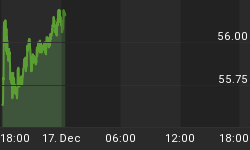America's huge debts are backed by the full faith and credit of the United States Government. However, the U.S. dollar is backed fully by the faith and hope that its value will not continue to be eroded away. While I maintain the imminent demise of the dollar is unlikely, our nation's ability to repay its mounting debt is waning.
Wealth is a tangible asset or a claim on a tangible asset that can be traded and stored. In order to be able to repay debt, a country must be able to produce assets in exchange for its obligations. Contrary to the claims of some economists, the U.S. balance of payments deficit (over $700 billion in 2005) is not a sign of a strong domestic economy. Rather, it is indicative of an economy that cannot sustain its own appetite to over-consume and consistently transfer its wealth into foreign hands.
According to the latest release from the Bureau of Labor Statistics, the U.S. economy lost 15 thousand new manufacturing jobs for the month of June. Today, only 13% of the economy is manufacturing-related. In 1965, by contrast, manufacturing represented 26% of G.D.P. There are currently 14.3 million people employed in the manufacturing industry today, the lowest level since 1950, and from 1999-2004 alone the U.S. lost 2,867,000 manufacturing jobs.
Washington's solution to this deterioration is to encourage foreign governments to let their currencies appreciate while devaluing the dollar further in order to "fix" the trade and current account deficits. But how can the imbalances be reconciled if we do not have the infrastructure to produce the goods they desire? Americans are borrowing to consume with a decreasing ability to make good on its obligations. A service based economy cannot build wealth and foreign governments cannot accept those services as payments of debt.
Turning to that national debt, we see much the same worrisome picture. According to the Department of Treasury as of March 2006, foreigners owned 50.8% of all privately held treasury debt. The current total of public and privately-held debt is equivalent to 65% of G.D.P. It is projected that the U.S. government will accumulate more than $55 trillion in debt over the next 75 years from Medicare and Medicaid alone, which brings us to brings us to the most salient issue: since the value of any fiat currency is a function of the government's ability to limit its supply, how much incentive will government have to restrain monetary growth when it comes time to pay those bills? The temptation to rapidly inflate may simply be too great.
After Bretton Woods, the world's central banks pegged their currencies to the U.S. dollar and abrogated the gold standard en masse. Decades of using the U.S. dollar as the world's reserve currency have led to 66.3% of their foreign exchange reserves being held in dollars.
This could lead to a pernicious scenario near the middle of the next decade based on some reasonable, yet admittedly uncertain, assumptions such as:
- Over the next ten years, the current account deficit continues to run at a rate of nearly $800 billion.
- The annual budget deficit nears 1 trillion dollars as the excess tax receipts currently incorporated into the unified budget derived from Social Security evaporates according to demographic certainties.
- The national debt reaches $16 trillion by 2017, which is an actual forecast from the Heritage foundation.
The list could go on but the trend is clear and it means the risk is that foreign central will one day reduce their willingness to keep buying newly-issued treasury debt. The potential future outcome, then, could be higher interest rates and lower GDP for an economy with a fraction of its former manufacturing economy and astronomical entitlement bills coming due.
Although this may sound like an extreme situation, it is a more likely scenario than most economists will admit. It can at least be confidently concluded that the rates of taxation, interest and inflation will likely be much higher in years to come. The future of America's economy, and indeed the world's economy, rests fully on the faith and hope that the U.S.D. will not depreciate like that of a third world country teetering on bankruptcy. Unfortunately, the supply of dollars may increase dramatically in the coming years without an economy that can back or redeem them for anything of real value.
With this in mind, it is my contention that investors should keep preparing now for an ongoing, strengthening inflation crisis. As such, commodities and commodity-related investments continue to represent attractive assets that most investors should consider.
**Investors are increasingly turning to Canada for energy sector exposure as they search for hedges against inflation. To learn more, get "Go North!" our exclusive, free report on Canadian royalty trusts by clicking here: http://www.deltaga.com/reportForm.asp?rep=2.















